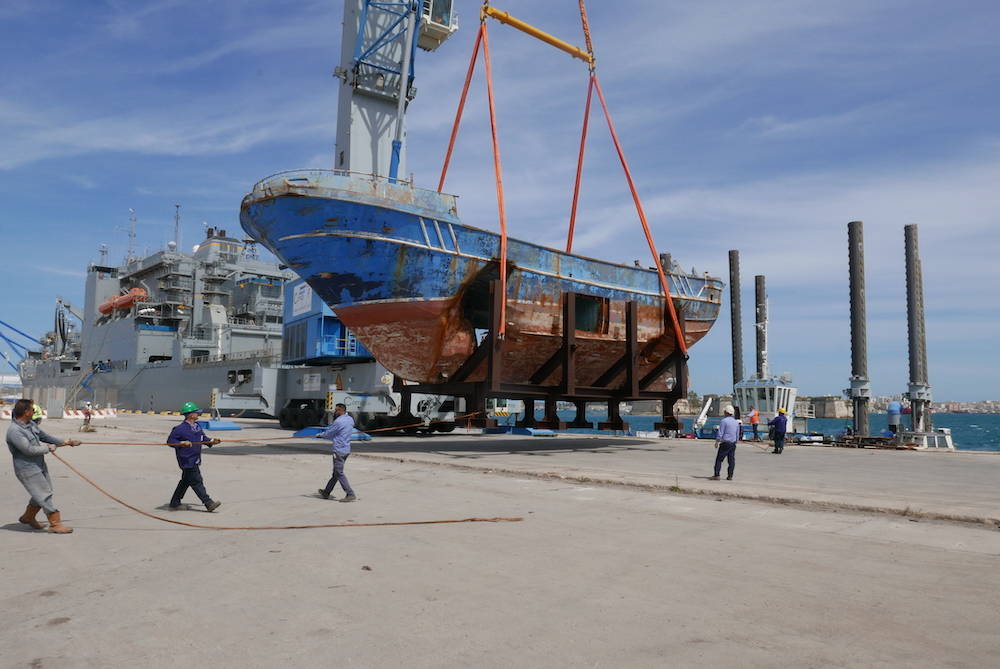Remains of a Sunken Migrant Ship Become a Biennale Piece
The 58th Venice Art Biennale, one of the world’s major international art events, opens this week and everyone is already talking about Swiss-Icelandic artist Christoph Büchel’s contribution, a project titled “Barca Nostra,” which means “our boat,” also a play on “mare nostrum” (“our sea”), a Roman name for the Mediteranean, as well as the name given to the operation launched by the Italian government in 2013 to tackle increased immigration and migratory ship wreckages off Lampedusa.
For this work, the artist, who has already been known to carry out political and provocatory projects, recovered the wreck of a fishing boat that sank between the coast of Libya and the Sicilian island of Lampedusa on April 18, 2015, causing the death of 700 to 800 migrants, and had it installed on the shore of the Arsenale, one of the Biennale’s exhibition spaces.
In 2016, the ship was recovered from the seabed and brought back to a NATO naval base in Augusta, Sicily. Obtaining it was not an easy process, as there were other proposals for its use and no official owner. “The government had recovered it but officially the defence ministry had only custody of it, not ownership. And officially shipwrecks in Italy are supposed to be destroyed,” explained Maria Chiara di Trapani, a Biennale curator.
This project was strongly wanted by Ralph Rugoff, the curator of this year’s Biennale titled “May You Live in Interesting Times.” As is always the case considering the quantity and variety of the works exhibited, the theme is multifaceted and can be interpreted in a myriad of ways, but its name certainly reveals the intention to conjure discussions about the times we live in and the phenomena they are characterized by. Migration is undoubtedly amongst them and this work confronts the theme in a powerful way.
The April 2015 shipwreck is one of the deadliest to have ever taken place in the Mediterranean, but it is by no means an isolated case. The sight of this ship, broken and rusted, is terribly ominous because it immediately conjures up the countless other vessels that have met and continue to meet similar fates. It is described as “a relic of a human tragedy but also a monument to contemporary migration, engaging real and symbolic borders and the (im)possibility of freedom of movement of information and people.”
The work “invites silence and reflection,” comments the President of the Biennale Foundation Paolo Baratta, who reveals that the intention in including it in this year’s Biennale was to “move people’s consciences.”
“We are living in a tragic moment without memory. We all look at the news, and it seems so far away,” explains Ms. di Trapani, who hopes that actually seeing the ship first-hand, feeling its presence will help change that.
After the Biennale, which will end on November 24th, the wreck will be brought back to Augusta and placed in a new monument called “Giardino della Memoria” (“Garden of Memory”), a collective memorial dedicated to the migrants who have lost their lives at sea.









































i-Italy
Facebook
Google+
This work may not be reproduced, in whole or in part, without prior written permission.
Questo lavoro non può essere riprodotto, in tutto o in parte, senza permesso scritto.